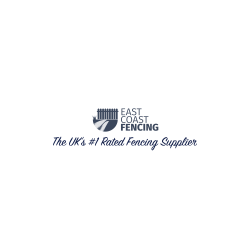Garden Fencing: A Comprehensive Guide

Gardening is not just about planting seeds and watching them grow; it's an art that reflects the gardener's vision and dedication. But every masterpiece needs protection, and for your garden, that protection comes in the form of fencing. Garden fencing serves multiple purposes - from safeguarding your precious plants against pests to adding an aesthetic appeal to your property. In this comprehensive guide, we will walk you through the various aspects of garden fencing, ensuring you have all the information needed to make the right choices for your green sanctuary.
The Purpose of Garden Fencing
Before we explore the options available, it's important to understand why you might need a fence for your garden:
- Protection: The primary purpose of garden fencing is to protect your plants from animals and pests.
- Privacy: A garden fence can provide privacy for your outdoor space, making it a secluded retreat.
- Decoration: Fences can also be a decorative element, enhancing the overall look of your garden.
- Boundary: It clearly defines the area of your garden, setting it apart from the rest of your property.
Choosing the Right Material
When it comes to garden fencing, there are several materials to choose from, each with its benefits and considerations:
Wood
Wooden fences are a popular choice due to their natural appearance, which blends easily with garden environments. They can be customised with various paints and stains. However, they require maintenance to prevent rot, insect damage, and weathering.
Metal
Metal fencing, including wrought iron, aluminium, and steel, offers durability and strength. While often more expensive and less private than wood, metal fences can provide intricate designs for decorative purposes.
Vinyl
Vinyl fencing is a low-maintenance alternative to wood, resistant to rot, pests, and weathering. It comes in various styles, though it might have a higher initial cost.
Bamboo
Bamboo fencing adds a unique and eco-friendly touch to gardens. It's naturally durable and offers a high level of privacy but can be susceptible to weather over time if not properly treated.
Chain Link
While not the most attractive option, chain link fencing is affordable, durable, and effective at keeping pests out. It can be combined with climbing plants to enhance its appearance.
Styles of Garden Fencing
- Picket Fencing: Known for its classic look, picket fencing is typically made from wood or vinyl and suits cottage-style gardens.
- Privacy Fencing: Taller than other types, privacy fences block view and access, providing a private space.
- Decorative Fencing: These fences focus on aesthetics and are often used to accent specific areas of a garden rather than for security or privacy.
- Border Fencing: Usually shorter, border fences are used to enclose or separate different sections of a garden.
Installation Considerations
- Planning Permission: Depending on your location, you may need planning permission to erect a garden fence, especially if it's over a certain height.
- Professional vs DIY: Consider whether you have the skills and tools required for a DIY installation or if hiring a professional is the more sensible option.
- Maintenance: Factor in the time and cost required to maintain your chosen fencing material.
Enhancing Your Garden Fence
Once your fence is installed, think about ways to enhance its function and beauty:
- Climbing Plants: Utilise your fence as a support for climbing plants or espalier trees.
- Lighting: Add outdoor lighting along your fence for ambiance and security.
- Decoration: Personalise your fence with paint, hanging planters, or decorative ornaments.
Conclusion
Garden fencing goes beyond mere functionality; it plays a crucial role in defining the character and security of your outdoor space. By selecting the right material and style, and considering the installation and maintenance needs, you can ensure your garden fence not only enhances the beauty of your garden but also protects its bounty. Whether you opt for the natural charm of wood, the durability of metal, or the convenience of vinyl, your garden fence can be a statement of your personal style and your commitment to nurturing your garden.














Leave a Comment